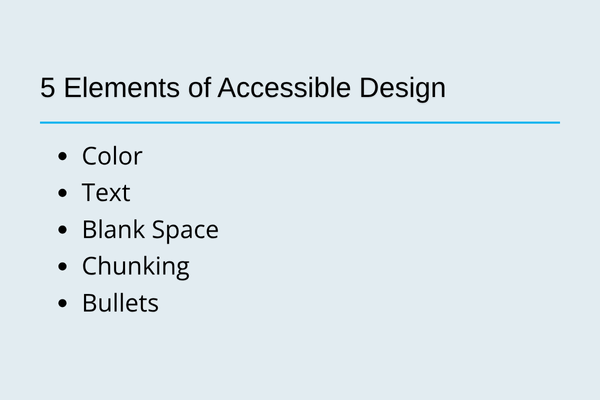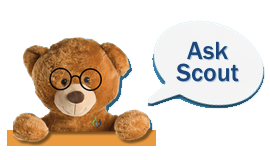
Clare Kelley, CCLS, HLS
Clare is a certified child life specialist and health literacy specialist. After four years working as a CCLS, she became a patient education editor at Vanderbilt University Medical Center. Clare now runs her own freelance health literacy practice, where she specializes in plain language writing and accessible content design. She currently lives in Nashville, Tennessee.

After 4 years as a child life specialist, I began my health literacy career as an editor in a hospital patient education department. I specialize in taking complex medical information from providers and turning it into accessible, actionable resources for patients. I was proud of all the ways my child life practice prepared me for this role and aligned with patient education standards. I was also surprised by the gaps in my knowledge. There was a lot I didn’t know about best practices for written health communication, but as I learned new techniques and applied it to my work, the quality of the resources I created improved significantly. The goal of this article is to help you foster health literacy more intentionally and effectively in the resources you create. I’ll walk through why health literacy is so important, what it entails, and ten tips for bringing it to the forefront of your resource creation process.
What is health literacy?
You may not be familiar with the term “health literacy”, but you’ve been advocating for it and supporting it for as long as you’ve been a child life professional. The Center for Disease Control defines two types of health literacy:
1. “Personal health literacy is the degree to which individuals have the ability to find, understand, and use information and services to inform health-related decisions and actions for themselves and others” (Centers for Disease Control and Prevention, 2024).
2. “Organizational health literacy is the degree to which organizations equitably enable individuals to find, understand, and use information and services to inform health-related decisions and actions for themselves and others” (Centers for Disease Control and Prevention, 2024).
Every day, you support patients’ and families’ personal health literacy, and child life departments are a huge part of organizational health literacy.
Why focus on health literacy?
Did you know that around nine out of ten US adults have limited health literacy skills (Center for Health Care Strategies, 2024)? When patients struggle to understand their care, they experience poorer health outcomes and develop more health care needs. One study found that patients with low health literacy were more likely to have repeat emergency department visits (Shahid et al., 2022). This means low health literacy individuals are more likely to have acute health crises and contend with all that brings: more time and money spent on care, more pain and stress, and a higher risk of bodily harm. It is fair to assume the same is true for pediatric patients who are children of low health literacy caregivers.
This is a public health issue and an equity issue. Latino, Black, and American Indian/Alaskan Native Americans are more likely to have lower health literacy levels and worse health outcomes than white Americans (Center for Health Care Strategies, 2024). Older adults and non-native English speakers also have disproportionately low rates of health literacy (Coughlin, Vernon, Hatzigeorgiou, & George, 2020).
Health literacy support leads directly to better health outcomes for patients and a more equitable society as a whole. So what makes for a resource that supports health literacy? Let’s talk about accessible content and accessible design - what these mean and how to put them into practice.
Accessible Content

The more our content can be simple, clear, short, and direct, the more accessible it will be. According to National University (2025), “approximately 45 million U.S. adults are functionally illiterate, reading below a fifth-grade level.” Notably for child life specialists, the children of these adults are very likely to have low literacy scores themselves (National University, 2025). Writing with accessibility in mind benefits these patients and families, and those of all reading levels. We know that medical situations cause stress, and when people are stressed, information comprehension is more limited. The last thing we want to do is overcomplicate or overwhelm. Here are 5 tips to help you meet your patients and families where they’re at.
1. Choose a purpose for your resource: Before you begin working on your resource, write out the main message you want to get across (Centers for Disease Control and Prevention, 2018). Keeping your scope narrow will help convey a specific message in each resource you create. Is this resource about procedural preparation for a patient? Stick to procedural preparation. Save diagnosis education, medication regimen, coping strategies, and emotional processing for a different place.
2. Keep it brief: This applies to the resource as a whole and all of its components. Try to keep resources under 1 page if possible, paragraphs under 5 sentences, and sentences under 20 words (Centers for Disease Control and Prevention, 2018).
If your document is longer than you’d like, here are some questions to guide you:
- How many goals do I have for this resource? If I have more than 1 or 2, can I split it into a few different resources?
- What information is “nice to know” and what is “need to know”? Can I delete any extra “nice to knows”?
- Is there anything here that will be or would be better communicated in person instead of on paper?
.png?sfvrsn=e1087f4c_1)
3. Use plain language: This means using simple words whenever you can and defining any complex ones (Centers for Disease Control and Prevention, 2024). As child life specialists, we’re trained in appropriate language. We use soft language to minimize anxiety. We use the simplest medical terms and explain what they mean to maximize understanding. But what about the language around those terms? Using the simplest terms possible for everyday words can be equally important for patients and caregivers of all reading levels. Prioritize approachable language over professional language. Don’t be afraid to sound casual! Consider these subtle shifts on the left suggested by the PRISM Readability Toolkit.
4. Use active voice: This is the most grammatical tip. Using active voice supports reading comprehension and is much more accessible to low literacy readers (Centers for Disease Control and Prevention, 2025). To understand the difference, compare these two sentences. The sentence written in an active voice is easier to follow and provides a clearer picture of what will happen.
- Passive voice: “You’ll have your blood pressure taken.”
- Active voice: “The nurse will take your blood pressure.”
5. Include interactive elements: When you’re thinking about the content for your resource, consider adding a place for reader participation. This could be as simple as a rhetorical question. It could also look like a fill-in-the-blank knowledge check or a prompt for patients to discuss the resource with a parent, doctor, nurse, or child life specialist. If you have the capacity, the very best version of this tip incorporates the “teach-back method”. In health literacy, this means asking the patient or family member to tell you in their own words what they learned from your conversation or resource (Agency for Healthcare Research and Quality, 2023). Studies have shown that this is an effective way to make sure your reader comprehends information (Talevski et al., 2020). The teach-back method also gives you a chance to correct misunderstandings.
Accessible Design
Our patients and families may have low vision, color blindness, reading disabilities, or low functional literacy. It’s important to design resources that are highly legible, with layouts that are easy to follow. Lower literacy readers may find it difficult to read a resource with a complicated design (Freed, 2025). For example, if information is presented in bubbles all around the page, rather than starting at the top and ending at the bottom, it may be hard for some readers to make sense of. Here are 5 elements to consider in supporting reader understanding through design.

1. Color: As child life specialists, we want our resources to engage the pediatric patients and caregivers who will be using them. While colors can bring some much needed normalization and playfulness to the hospital setting, we also want to make sure that the information we’re trying to convey is easily visible to all audiences.
Here are a few good rules of thumb when it comes to color:
- Use very dark text on a very light background or vice-versa.
- Avoid using red and green color combinations.
- Use an online “contrast checker” tool to make sure your color combinations are highly legible (Mendez, n.d.).
2. Text: To support all vision and reading needs, keep text big and keep it simple. The smallest font size you should use is 12 point. Avoid using italics, bolding, underlining, and writing in all caps as much as possible. If you need to differentiate titles and subtitles from the rest of your text, it’s better to rely on different font sizes or different colors (Stanford University, n.d.).
3. Blank space. Space around content equals space to digest that content. By all means, include pictures of a CT scanner on your procedural prep docs. Add Bluey family portraits around the edges of your medicine calendar! But keep in mind that a little goes a long way. And any time you can break up text with a bit of white space in between, you’re supporting your readers’ capacity to take information in and make sense of it (Mendez, n.d.).
4. Chunking. We’ve already talked about keeping resources brief, but sometimes we just have a lot of information to convey. In these situations, chunking can help (Centers for Disease Control and Prevention, 2024). This means, wherever possible, use subheadings and keep sections short. It can also help to split your text into two columns instead of having sentences span the whole page. Visually, this is less intimidating than long lines of text across the page. When your audience first glances at the resource, it all looks a bit more manageable.
5. Bullets. Bullets are another helpful way to break up information (Centers for Disease Control and Prevention, 2025). If you find yourself listing several things separated by commas, try presenting them in a bulleted list instead. Like chunking, this helps readers to take in a little bit of information at a time, think it through, and when they’re ready, move on to the next piece of information. Compare the paragraph above on chunking with the information below. It’s all the same content, but uses a bulleted list.
“We’ve already talked about keeping resources brief, but sometimes we just do have a lot of information to convey. To help your reader read it all without getting overwhelmed, do some chunking. Here are some ways to “chunk” information:
- Use subheadings
- Keep sections short
- Split text into two columns instead of having sentences span the whole page. Visually, this is less intimidating than long lines of text across the page.
When your audience first glances at the resource, it all looks a bit more manageable.”
Conclusion
As a child life professional, you promote health literacy all the time. When you create resources, provide diagnosis education, and offer treatment support, procedural preparation, and coping choices - it all falls under the umbrella of health literacy. All of those interventions give patients access to information and agency in their care.
I hope this guide will support you in that mission. Consider the most recent resource you created. Which of these principles could you apply to make it even more accessible and supportive for all patients and families?
_________________________________________________________________________________________________________________________
References
Agency for Healthcare Research and Quality. (2023, May). Tool: Teach-Back. TeamSTEPPS. https://www.ahrq.gov/teamsteppsprogram/curriculum/communication/tools/teachback.html
Centers for Disease Control and Prevention. (2024, October 16). Guidance & tools. Centers for Disease Control and Prevention. https://www.cdc.gov/health-literacy/php/develop-materials/guidance-standards.html
Centers for Disease Control and Prevention. (2025, July 21). Plain language materials & resources. Centers for Disease Control and Prevention. https://www.cdc.gov/health-literacy/php/develop-materials/plain-language.html
Centers for Disease Control and Prevention. (2024, October 16). What Is Health Literacy? U.S. Department of Health & Human Services. https://www.cdc.gov/health-literacy/php/about/index.html
Centers for Disease Control and Prevention. (2018, December 20). Your guide to clear writing [PDF]. National Center for Environmental Health. https://stacks.cdc.gov/view/cdc/103770
Center for Health Care Strategies. (2024, March). Health literacy fact sheets. https://www.chcs.org/resource/health-literacy-fact-sheets/
Center for Health Care Strategies. (2024, March). How improving health literacy can advance health equity [Fact sheet]. Retrieved from https://www.chcs.org/resource/how-improving-health-literacy-can-advance-health-equity /
Coughlin, S. S., Vernon, M., Hatzigeorgiou, C., & George, V. (2020). Health Literacy, Social Determinants of Health, and Disease Prevention and Control. Journal of environment and health sciences, 6(1), 3061.
Freed, B. (2025, February 25). Health Literacy Lab: Type Tricks — Graphic Design at a Glance. Health Research for Action. https://healthresearchforaction.org/news/health-literacy-lab-type-tricks-graphic-design-at -a-glance/
Mendez, S. R. (n.d.). 3 essential graphic design tips for clear and accessible health communication. Harvard T.H. Chan School of Public Health. https://hsph.harvard.edu/research/health-communication/resources/graphic-design-tips/
National University. (2025, June). 49 adult literacy statistics and facts for 2025. National University. https://www.nu.edu/blog/49-adult-literacy-statistics-and-facts/
Ridpath, J. R., Greene, S. M., & Wiese, C. J. (2007). PRISM Readability Toolkit (3rd ed.). Group Health Research Institute. https://hrp.weill.cornell.edu/sites/default/files/prism_readability_toolkit.pdf
Shahid, R., Shoker, M., Chu, L. M., Frehlick, R., Ward, H., & Pahwa, P. (2022). Impact of low health literacy on patients' health outcomes: a multicenter cohort study. BMC health services research, 22(1), 1148. https://doi.org/10.1186/s12913-022-08527-9
Stanford University. (n.d.). Typography. Stanford University IT. https://uit.stanford.edu/accessibility/concepts/typography
Talevski, J., Wong Shee, A., Rasmussen, B., Kemp, G., & Beauchamp, A. (2020). Teach-back: A systematic review of implementation and impacts. PloS one, 15(4), e0231350. https://doi.org/10.1371/journal.pone.0231350

